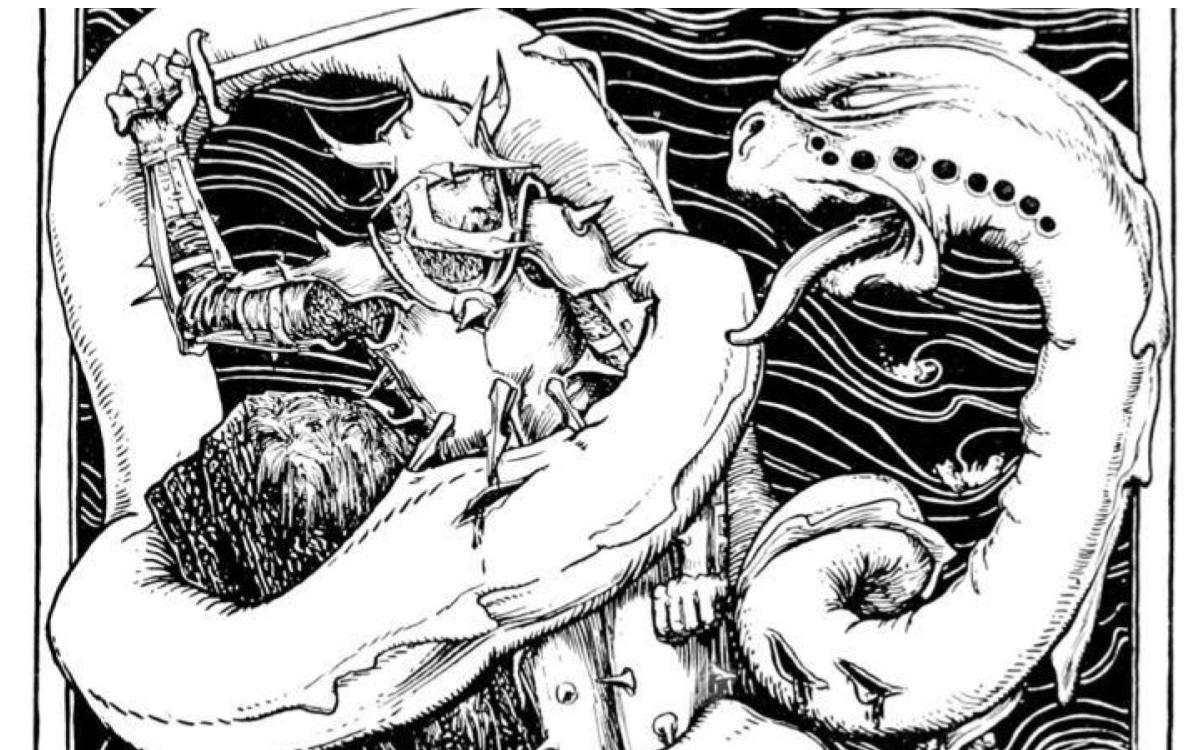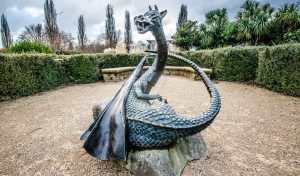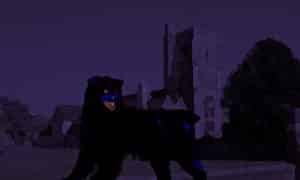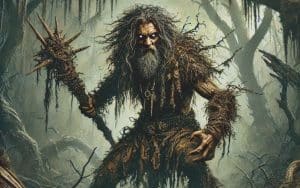CLAIRE BARRAND explores the disturbing stories of Cryptid Worms from folklore
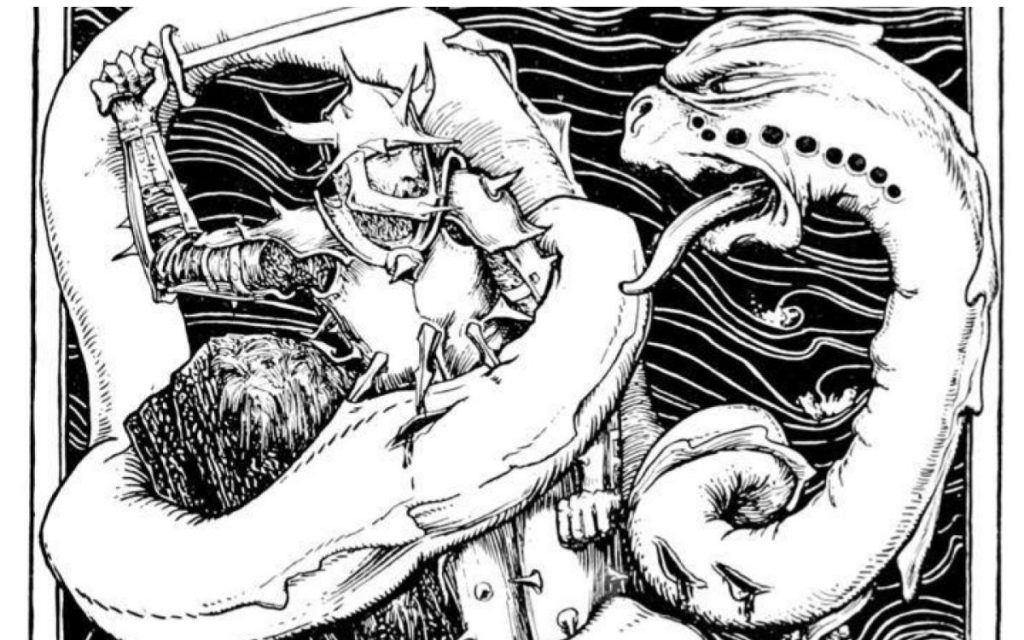
I have to tell you about the creepy stories I have discovered about an unusual type of cryptid in British Folklore whose origins derive from the most skin crawling and unnerving aspects.
My best friend Katherine and I were discussing childhood fears and phobias when she mentioned to me that while on a road trip with her Auntie one day aged about six years old, she was told the story of The Lambton Worm.
The story terrified her to such an extent that she has had nightmares for years and even to this day the very mention of its legend sends shivers down her spine. I found it amusing at first. How could a worm be scary?
Allow me to share the terrifying truth.
The Lambton Worm
The Lambton Worm is a legend from County Durham in the North East of England in the UK.
The story originates around the River Wear and is one of the area’s most famed pieces of folklore, which have been adapted from written and oral tradition into pantomime and song formats.
The story revolves around a man by the name of John Lambton, was an heir of the Lambton Estate, in County Durham, and his battle with a giant worm (dragon) which was frightening the local villages.
Typically with myths, details of the story can change with each telling, but the basics are all you need to know.
The young John Lambton was a rebellious boy who missed church one Sunday to go fishing instead.
As he was setting up his equipment, John met an old man (sometimes said it was a witch) who warned him that no good could come from skipping church.
He continued to fish but did not catch anything until the church service finishes, at which point he fishes out a small eel-like creature with nine holes on each side of its head.
There are many depictions of this worm, and some stories say it had legs. The old man appeared once more and warned John that this beast is evil and so John disposes of it quickly before going home and forgetting all about it.
While John is growing up into a man, the creature also continued to increase in size within the murky waters and mutates into something enormous and poisonous.
The inhabitants of the village start to notice livestock going missing and discover to their horror that the giant worm has emerged onto land and coiled itself around a local hill named today as Worm Hill.

The story goes that, so huge was the large worm it wrapped itself around the hill seven times, and even today the marks of the worm are said to be visible.
The worm continued to terrorise the nearby villages, eating sheep, preventing cows from producing milk and even seizing away small children.
It then headed towards Lambton Castle, where the Lord (John Lambton’s aged father) managed to sedate the creature by feeding it with the milk of nine healthy cows a day.
Many tried to kill the beast but failed. When a piece was cut off the worm, it only regrew the missing piece.
Visiting knights from afar would attempt to slay the beast, but all are defeated and killed in the process. When angry, the worm would rampage ripping up trees by coiling its tail around them, creating devastation by hurling around the uprooted trees like a club.
John Lambton who returned from the Crusades after a seven-year spell, found his father’s estates almost destitute because of the worm and he decided to fight it, but first sought the guidance of a Durham Witch.
The witch told John about his childhood responsibility for the worm, and he recalls the day he went fishing. She told him to cover his armour in spikes and fight the worm in the River Wear, where it lay during the day wrapped around a great rock.
The witch also told John that after killing the worm he must then kill the first living thing he sets eyes on, or else his family will be cursed for nine generations and will not die in their beds. John prepared his armour as per the witch’s directions and arranged with his father that, when he has slain the worm, he would sound his hunting horn three times.
On this signal, his father was to release his beloved hound so that it would run to John; he could kill the dog and thus avoid the curse. John Lambton then bravely confronted the worm by the river. The worm tried to crush him, wrapping him in its coils, but it cut itself on his armour’s spikes, the pieces of the worm fell into the river, and were washed away before they could join up again.
Finally, the worm was dead, and John sounded his hunting horn three times. Regrettably, John’s father was so thrilled that the beast was gone that he forgot to release the hound and rushed out to applaud his son. John could not stand to kill his father, and so after they met, the dog was released and killed anyway.
But it was too late, and nine generations of Lambtons were cursed not to die in their beds. The terrifying part of this story is that this curse seems to have held true for at least three generations.
- 1st generation: Robert Lambton, drowned at Newrig
- 2nd: Sir William Lambton, a Colonel of Foot, killed at Marston Moor.
- 3rd: William Lambton, died in battle at Wakefield.
- 9th: Henry Lambton, passed away in his carriage crossing Lambton Bridge on 26 June 1761. (General Lambton, Henry Lambton’s brother, was said to have been so terrified by the curse that he kept a horse whip by his bedside in case he was attacked. He died in his bed at an old age.)
There have been many fiction novels written inspired by the Legend of the Lambton Worm, including Bram Stokers 1911 novel The Lair of the White Worm, and Ian Watsons 1988 novel The Fire Worm. In 1978 an opera was written about The Lambton Worm, and in 1988 a film was made based on Stoker’s novel entitled The Lair of the White Worm.
These tales are not where the folklore ends, however. Also in the North of England in Northumbria, the Sockburn Worm was a vicious creature that resided in the village of Sockburn in Durham. It was said that the beast was finally slain by a man called John Conyers. The tale is said to be the inspiration for Lewis Carroll’s poem Jabberwocky. The Sockburn Worm still appears today on the district badge of the local Darlington & District Scout Association.
Another Cryptid worm in the U.K is that of The Linton Worm. A mythical beast referred to in a Scottish Borders legend dating back to the 12th century. A 12th-century writer described this worm it to be “In length three Scots yards and bigger than an ordinary mans leg.” The myth maintains many similarities to the Lambton Worm. The monster lived in a cave on the northeast side of Linton Hill, a spot which is still known as the “Worms Den,” at Linton in Roxburghshire on the Scottish borders.
Emerging from its lair at dusk and dawn to devastate the countryside, eating crops, livestock, and people, it appeared to be invincible. One day a man from the South (William or John) de Somerville, the Laird of Lariston and a man of great valour, heard about the worm. Determined to slay the beast he voyaged to the nearby village of Jedburgh and heard the lurid accounts of the locals. Witnessing the beast himself he noticed that the creature would open its mouth wide to swallow anything in its path but when faced with something too large to eat would remain still, with its mouth open. Identifying an opportunity, he went to a local blacksmith and had him forge an iron covered spear with a wheel at its tip which could impale a hunk of peat dipped in tar and brimstone.
He practiced riding with the burning spear to accustom his horse to the smoke. When he was ready, De Somerville approached the worm’s hideout with his servant at dawn. He knew that sitting on his horse he would prove too large for the creature to swallow. As if at a joust he attacked it, plummeting his burning lance into the monster’s cavernous mouth and down its throat, fatally wounding it.
The writhing death throes of the Linton Worm supposedly fashioned the curious landscape of the hills of the region, an area that came to be known as “Wormington.” The animal was said to have recoiled to its lair to die, its thrashing tail bringing down the mountain around it and burying it forever. The legend tells that de Somerville’s bravery was honoured by a carved stone at Linton Kirk. He was made Royal Falconer, knighted and made “First Barron” of Linton. The crest of the Somerville was a wyvern (heraldic dragon) perched on a wheel.
What are Cryptid Worms?
Worldwide folklore does have similarities, and the stories of mutant worms are no different. An internet search on the subject found more interesting information on the creatures, and this is what I found out. “The Mongolian Death Worm” is a creature alleged to exist in the Gobi Desert. In the book written by American paleontologist Roy Chapman Andrews written in 1926 titled “On the Trail of Ancient Man”. He states that he was not convinced by the tales of the monster that he heard about at a gathering of Mongolian officials: “None of those present ever had seen the creature, but they all firmly believed in its existence and described it minutely.” he wrote.
Andrews quotes Mongolian Prime Minister Damdinbazar, who in 1922 described the worm: “It is shaped like a sausage about two feet long, has no head nor leg and it is so poisonous that merely to touch it means instant death. It lives in the most desolate parts of the Gobi Desert.”
In 1932, Andrews published this information again in the book The New Conquest of Central Asia, adding: “It is reported to live in the aridest, sandy regions of the western Gobi.” Andrews, however, did not believe in the creature’s existence. The worm is said to inhabit the western or southern Gobi.
In the 1987 book Altajn Tsaadakh Govd, Ivan Mackerle described it as traveling underground, creating waves of sand on the surface which allow it to be detected. The Mongolians say it can kill at a distance, either by spraying a venom at its prey or using electric discharge. They say that the worm resides underground, hibernating most of the year except for June and July when it becomes active. It is also said that it most often comes to the surface when it rains and the ground is wet. The Mongolians believe that touching any part of the worm will cause instant death and agonising pain. It has been told that the worm frequently preyed on camels and laid eggs in its intestines, and eventually acquired the trait of its red-like skin. Its venom supposedly corrodes metal, and local folklore tells of a predilection for the colour yellow. The worm is also said to have a preference for local parasitic plants such as the goyo.
Many groups of people have travelled to the Gobi desert to look for evidence of the existence of the worm without managing to draw conclusions either way. In 2005, zoological journalist Richard Freeman mounted an expedition to hunt for the death worm but came up empty-handed. Freeman’s conclusion was that the tales of the worm had to be apocryphal, and that reported sightings likely involved non-poisonous burrowing reptiles. So where do the stories derive from if these accounts are untrue?
The term ‘worm’ refers to various relatively small elongated soft bodied animals including insect larvae. So in past times, caterpillars, millipedes, snakes, maggots, lizards and dragons too were all called worms. Historically people have seen the worm as a creature that was between life and death. The origin of the word comes from Old English ‘wyrm’ which means ‘serpent.’ When you examine the English language, we also use the term “worm” to describe a person who has a “nasty or unethical character undeserving of respect”.
In modern society, a Trojan Worm is the term used for a destructive software program capable of reproducing itself that is capable of spreading from one computer to the next over a network. Likewise, the word “Worm” is used in context to describe moving in a twisting or contorted motion, (especially when struggling), and also we might use the term to describe someone who has managed to slyly escape a situation using deliberate deceptive techniques; IE “He wormed his way out of that!”.
The human relationship with worms is a complex one too. Earthworms are known to be gardeners friends keeping the soil fresh and aerated and creating compost needed for healthy plant growth. Parasitic worms are a nasty reminder that worms can exist in our gut and those of animals causing sickness and pain feeding off our internal organ even causing blindness.
The fear of worms
Helminthophobia, scoleciphobia or vermiphobia is a specific phobia, the fear of worms, especially parasitic worms. The sight of a worm, or anything that looks like a worm, can cause someone with this phobia to have extreme anxiety or even panic attacks.
In conclusion, my thoughts are that worms are so closely linked to serpents that we can assume that these tales are linked. The serpent, or snake, is one of the oldest and most widespread mythological symbols. Serpents are represented as potent guardians of temples and other sacred spaces. This connection may be grounded in the observation that when threatened, some snakes (such as rattlesnakes or cobras) frequently hold and defend their ground, first resorting to threatening display and then fighting, rather than retreat.
Echoing the stories told of the Lampton and Linton Worms, and considering that they may have been the natural guardians of treasures or sacred sites which cannot easily be moved out of harm’s way. Besides this, Serpents are connected with vengefulness and vindictiveness. Were they possibly guarding these sites which were in some way gateways to the underworld or another realm?
I believe that there is an inextricable link between these stories and the stories of serpents. As with the nature of all legends, morphing into folklore and being embellished over the centuries, I do believe that, as with all these tales, stripped back to its roots, there is always an element of truth in their source.

